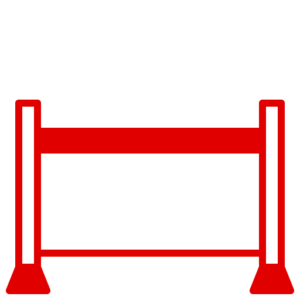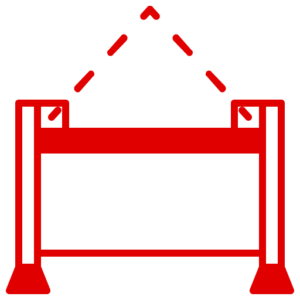News
Stillages in Hazardous Environments: Ensuring Safety Through LOLER Regulations
In our continuous effort to support safe operations in various work environments, Lowe Stillages and Cages puts a spotlight on a crucial aspect of stillage usage: operating in hazardous conditions. The Lifting Operations and Lifting Equipment Regulations (LOLER) provide a comprehensive framework that governs the use of lifting equipment, including stillages, in all settings, including those that pose additional risks. Here’s how LOLER regulations guide the safe use of stillages in hazardous environments.
Hazard Identification
To start with, LOLER regulations necessitate a thorough hazard assessment in hazardous environments where stillages are used. Employers are required to identify potential risks specific to these environments, which may include the presence of flammable substances, explosive atmospheres, or chemical hazards. Understanding these hazards forms the basis for all subsequent safety measures.
Implementation of Risk Control Measures
Once potential hazards have been identified, LOLER emphasises the implementation of appropriate control measures. These measures aim to mitigate risks through either the elimination or reduction of hazards, using methods like engineering controls, administrative controls, or the use of personal protective equipment (PPE). This underscores the importance of proactivity and preventive strategies in enhancing safety.
Training and Competency
Training plays a crucial role in safety, especially in hazardous environments. LOLER regulations mandate that employers provide comprehensive training to personnel operating stillages in these conditions. This training should encompass key topics such as the recognition and handling of hazardous substances, emergency procedures, and the proper use of PPE, ensuring operators are equipped to handle any potential hazards.
Equipment Selection and Adaptation
The selection of appropriate equipment is essential in hazardous environments. LOLER encourages the use of stillages that are specifically designed or adapted to withstand these conditions. This might involve choosing stillages made from materials resistant to corrosion or those featuring explosion-proof modifications, thus guaranteeing their safe and reliable operation.
Collaboration with Other Regulations
Lastly, LOLER regulations do not exist in isolation. They operate in harmony with other relevant regulations that govern hazardous environments. Therefore, employers should also consider and comply with additional regulations, such as those addressing hazardous substances, fire safety, or explosion prevention. This collaborative approach ensures a comprehensive safety strategy that protects all employees and assets.
By adhering to these guiding principles, employers can ensure the safe use of stillages in hazardous environments in accordance with LOLER regulations. The combination of hazard identification, risk control measures, appropriate training, suitable equipment selection, and compliance with other regulations creates a robust safety framework that keeps workers safe and operations running smoothly.
At Lowe Stillages and Cages, we are committed to providing products and insights that align with these safety principles, ensuring our clients operate with optimal safety, efficiency, and regulatory compliance.














